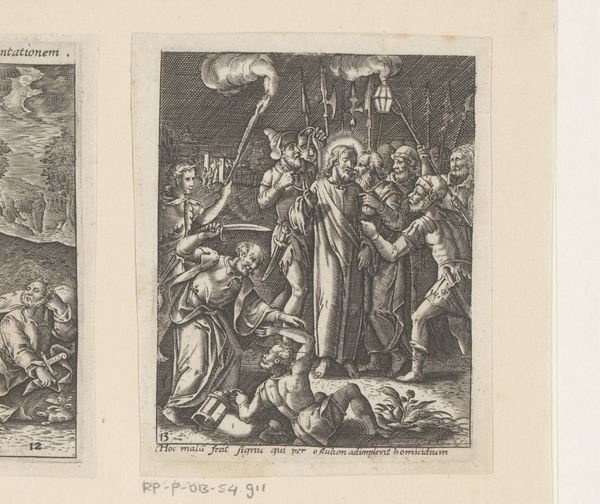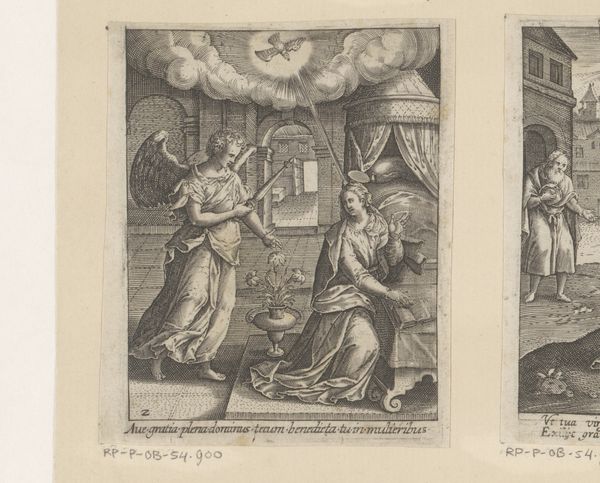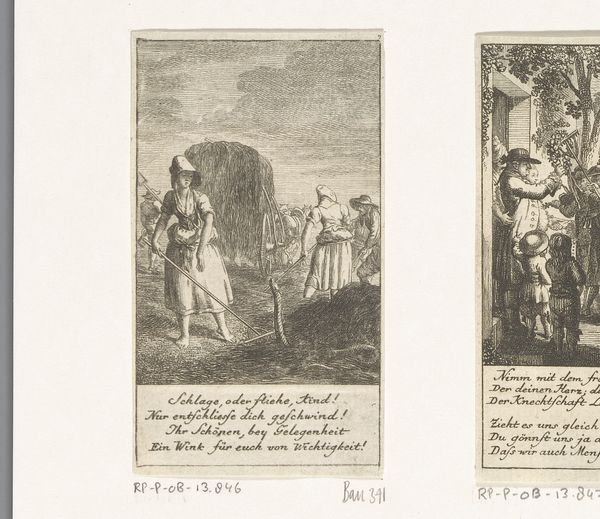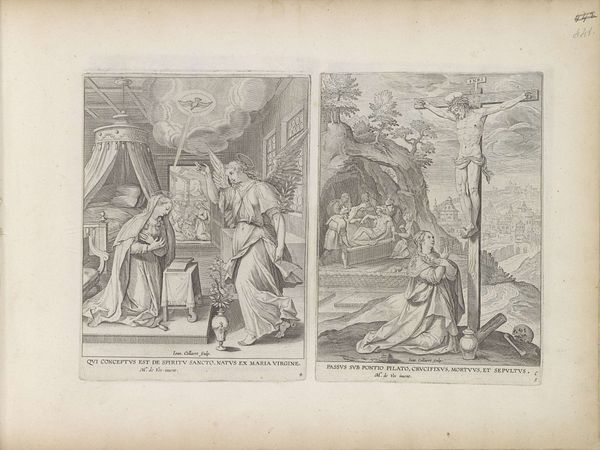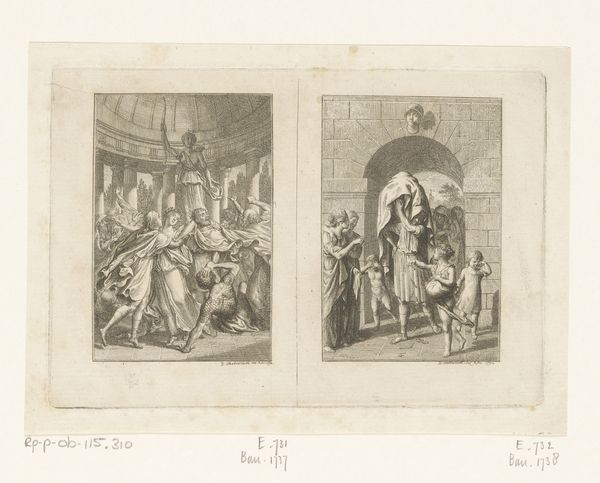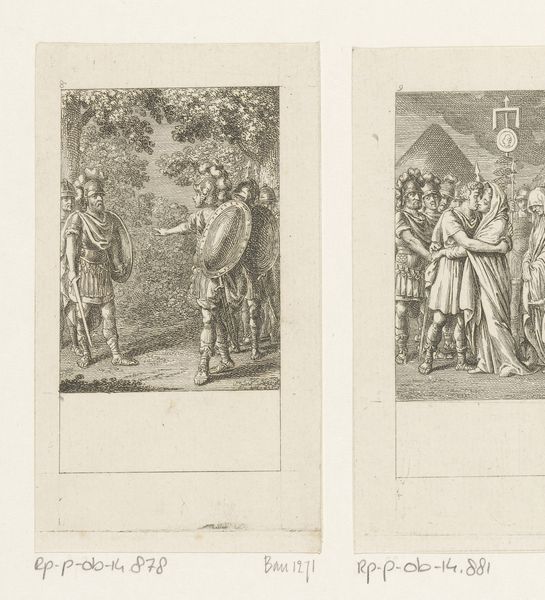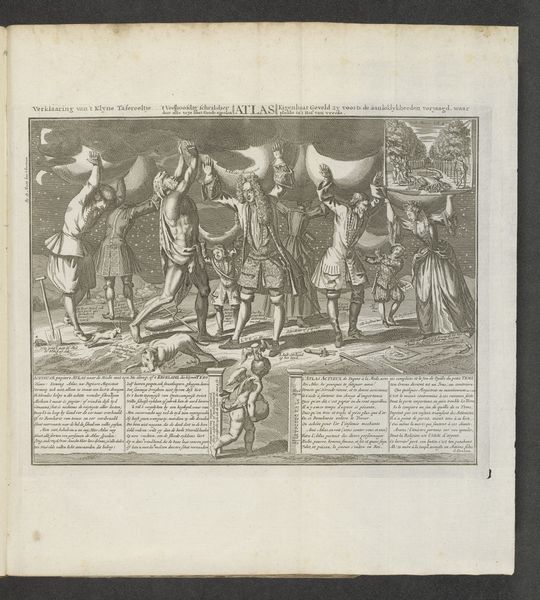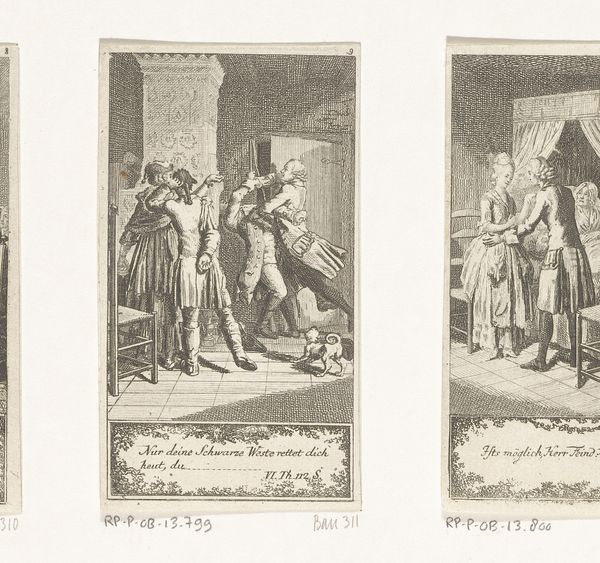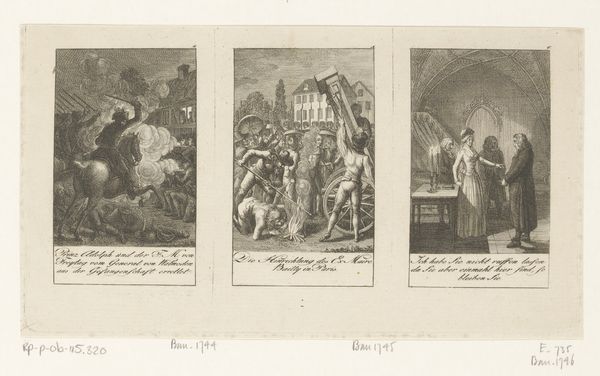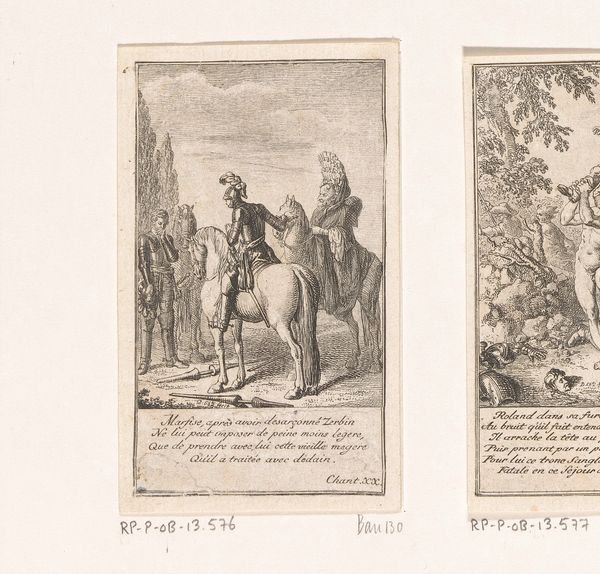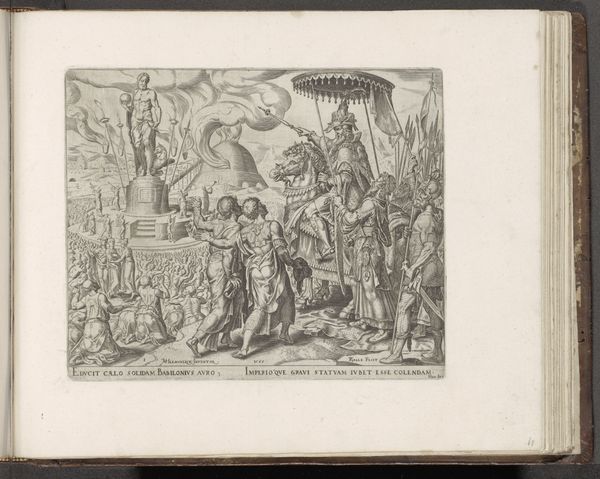
print, engraving
#
narrative-art
#
baroque
# print
#
figuration
#
history-painting
#
engraving
Dimensions: height 94 mm, width 64 mm
Copyright: Rijks Museum: Open Domain
Curator: This engraving at the Rijksmuseum is called "Adoration of the Shepherds". It's attributed to Heinrich Ulrich and dates anywhere from 1582 to 1671. Editor: It feels quite dense, visually—every inch is filled with lines, creating dramatic shadows and light, wouldn't you say? A distinct Baroque quality to its visual busyness. Curator: Exactly. Baroque art, especially in its religious form, often sought to overwhelm the senses. And the symbolism is layered: the shepherds, representing the common people, drawn to the divine child... a central scene repeated and reinterpreted across centuries. Editor: The child radiating light emphasizes not only divinity, but also a disruption of the natural order. See how all figures turn toward the light of revelation, literally illuminating the unseen order for society at the time. I wonder how viewers experienced this during the Reformation and Counter-Reformation. Curator: During that period religious art functioned, to a degree, as political messaging, wouldn't you agree? A reinforcement of Catholic dogma through emotionally compelling images in the face of Protestant challenges. Editor: Absolutely. Prints like these had a wide circulation, influencing beliefs across different social strata. The distribution of images such as this also created standards of cultural memory as shared history in public life. This piece offers a particularly intimate look at Baroque interpretations of the birth narrative. Curator: Seeing it now, in a museum, it connects us to a powerful history of religious sentiment. And these persistent images create lasting echoes. The arrangement of figures and deployment of sacred images like these helped to convey specific feelings about the divine family. Editor: And to consider how an image intended to move people religiously and politically so long ago, still evokes emotion and compels historical discussion today—it says so much about us too.
Comments
No comments
Be the first to comment and join the conversation on the ultimate creative platform.
